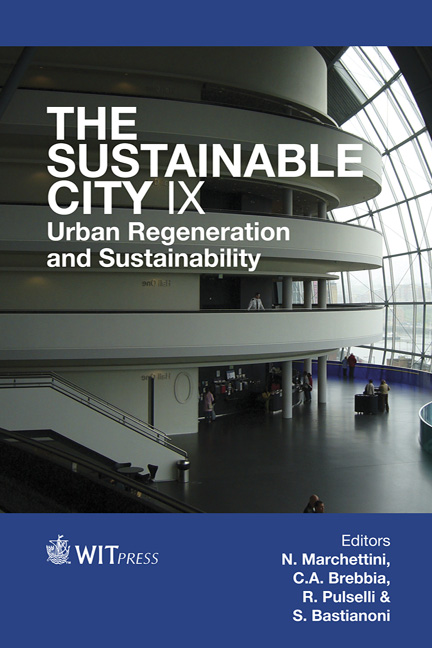Using Night-time Satellite Imagery To Visualize Emergy Density In Territorial Systems
Price
Free (open access)
Transaction
Volume
191
Pages
7
Page Range
343 - 349
Published
2014
Size
665 kb
Paper DOI
10.2495/SC140291
Copyright
WIT Press
Author(s)
L. Coscieme, S. Mancini, P. C. Sutton, N. Marchettini
Abstract
Cities are the emblem of the Anthropocene era we are living in, characterized by a large use of non-renewable resources. The economic activity concentrates in urban systems together with its negative and positive outcomes. More than 80% of global Gross Domestic Product is generated in the cities, where goods and services created by transforming energy and matter inputs are consumed. It is consequently relevant to study the distribution of energy use in urbanized systems. However, data availability and collection can be an obstacle for a dynamic interpretation of non-renewable energy use patterns in an urban rapidly changing environment. Night-lights data collected by satellite imagery can be used as a time-series available and high-resolution proxy for non-renewable energy use in a territory. At the urban scale, the use of this proxy needs to be deeply investigated. In this paper we present a correlation between an index of the “sum of lights” and non-renewable emergy: defined as the amount of solar energy embedded in the non-renewable resources used by a system. This relationship allows to produce density maps of energy consumption which enable the incorporation of spatially explicit representations of urban metabolism in geographic information systems.
Keywords
emergy, night-time lights, thermodynamic geography





